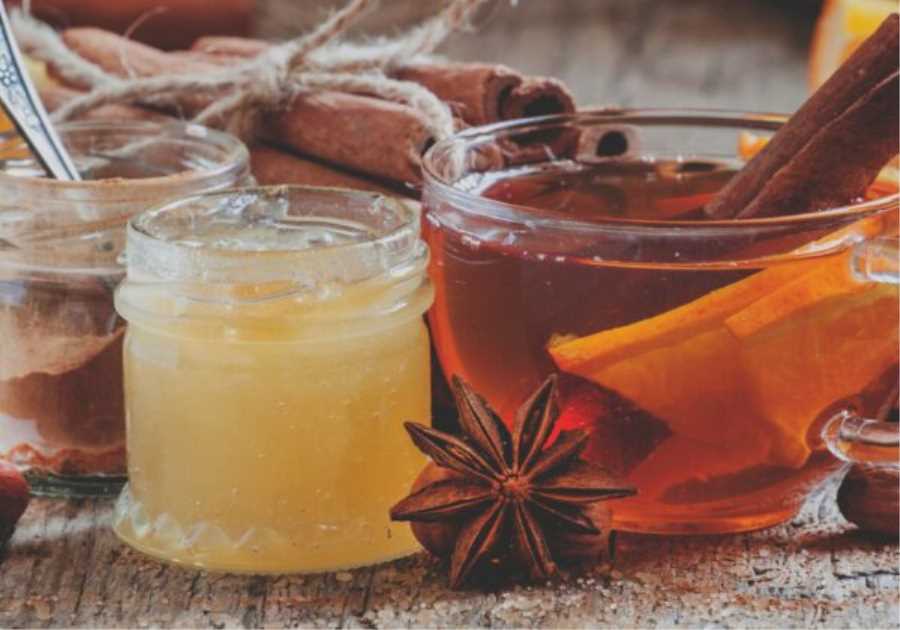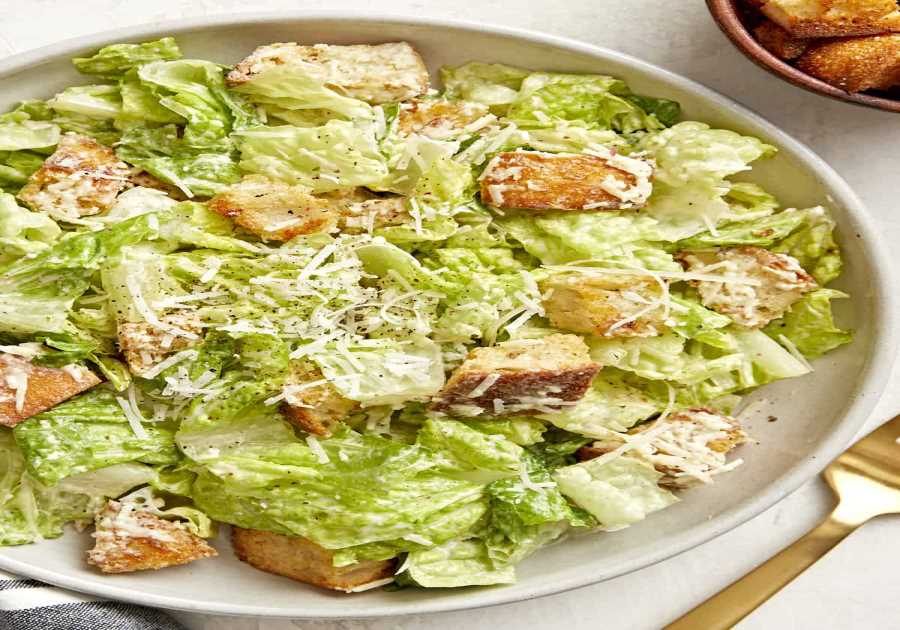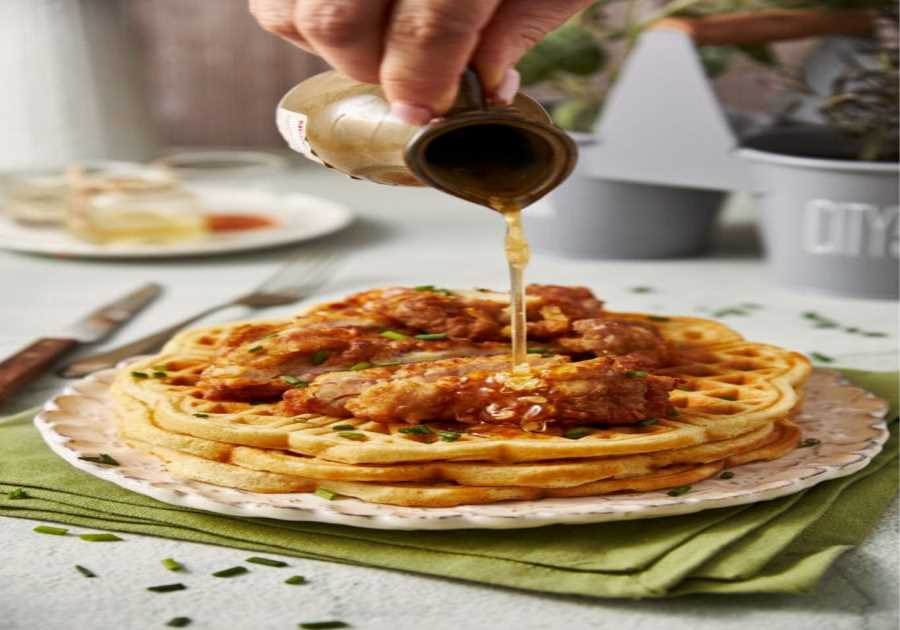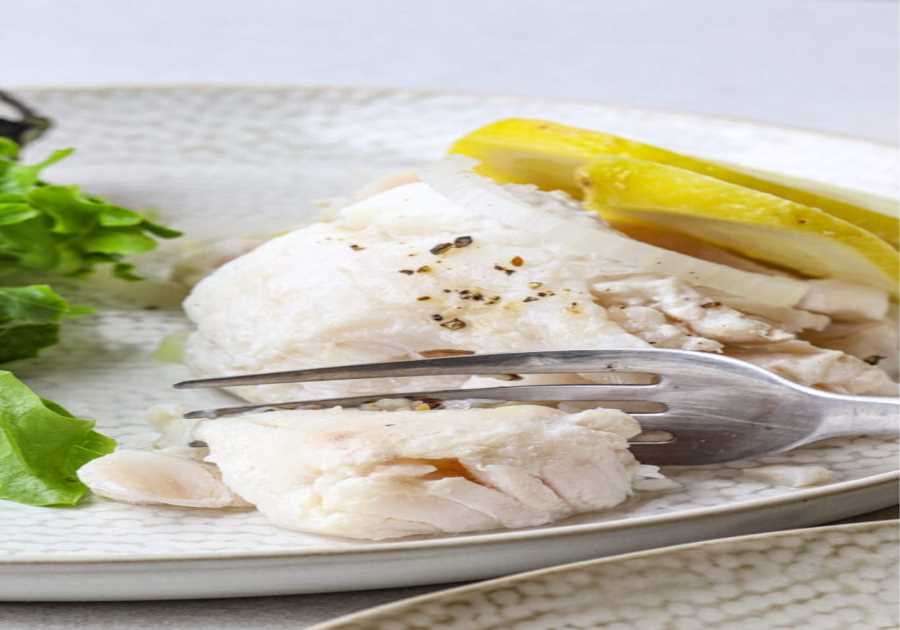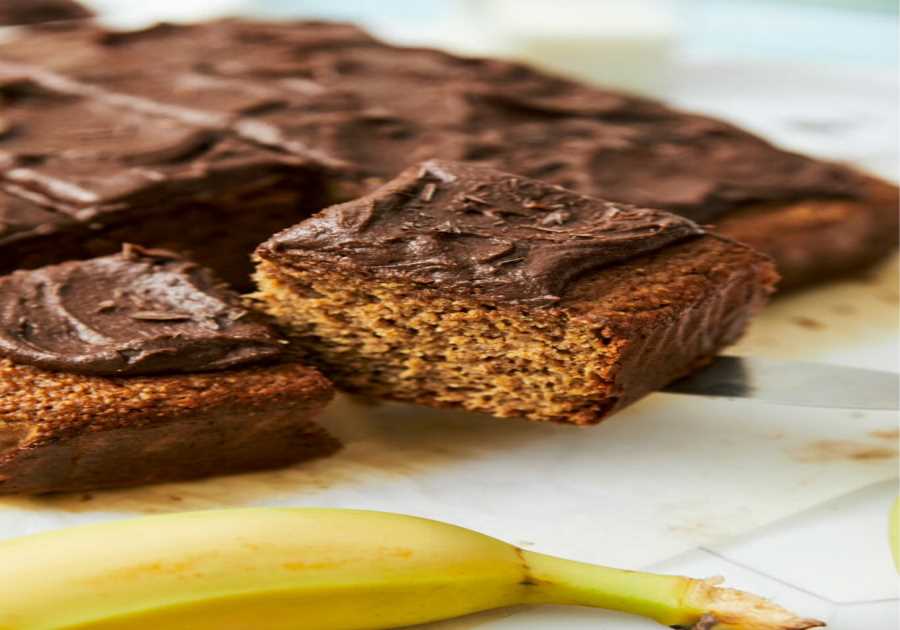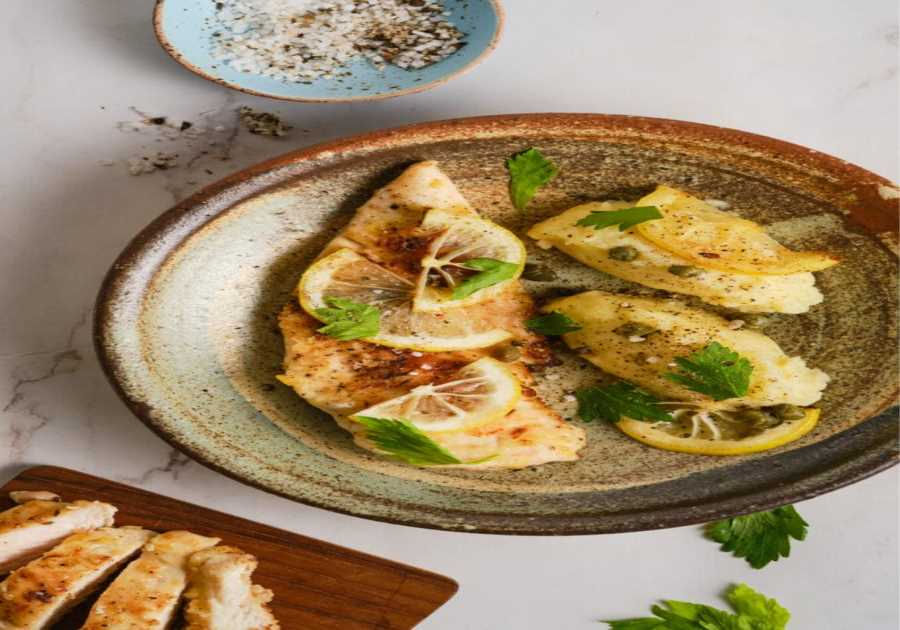Our mission also includes recognizing the many wonderful chefs and home cooks who dedicate themselves to creating delicious meals for their families or acclaimed restaurants worldwide.
We treasure any contributions you would like to make to our blog, or if you have a family recipe you'd like to share with our community, please reach out at [email protected]. You are amazing, and so should your tasty cooking!
For now, love yourself and enjoy this one ...
Vanilla is a flavor that is widely used in cooking, thanks to its rich aroma. Vanilla is often associated with sweets like ice-cream, cookies, and cakes. But its journey from farm to plate is an intriguing tale of culinary magic, history, and cultivation. This article will trace the fascinating story of vanilla. We'll explore its origins and cultivation as well as the culinary wonders that it has brought us.
The Origins of Vanilla
Vanilla is indigenous to Mexico where the Totonac tribe discovered its appeal centuries ago. The dark pods gave it the name "tlilxochitl", which means "black flower". Later, the Aztecs learned to use vanilla in their drinks, mostly as an expensive addition to xocoatl (a bitter drink based on cacao). The alluring scent of vanilla enchanted the Spanish conquistadors in the 16th century. They brought it to Europe and began its global journey.
Vanilla Orchids and their Cultivation
There are more than 100 different species of vanilla. The most common and commercially cultivated vanilla species is Vanilla planifolia. Climbers, vanilla orchids require a tropical climate with high humidity and constant temperatures. Vanilla is one of only a few orchids to produce edible fruits. These are commonly called vanilla pods or beans.
Hand-Pollination
Vanilla orchids in their natural habitat are pollinated primarily by hummingbirds and bees. In regions where vanilla is grown outside Mexico, the natural pollinators can be absent. It was not until the 19th Century that a Reunion Island slave named Edmond Albius discovered a manual method of pollination which mimicked the actions of absent pollinators. This discovery revolutionized vanilla cultivation, allowing farmers to manually pollinate flowers and increase vanilla bean yields.
Fermentation and Curing
After the vanilla pods have been harvested, they go through a crucial process called curing. During this time, they are exposed to heat and moisture. The curing process is crucial to developing vanilla's unique flavor and aroma. The pods must be blanched, sweated and dried for several months to form the complex chemical compounds that give vanilla its magical taste.
The Magic of Vanilla
Vanilla's aromatic compounds, like vanillin (vanillinol), give it an enchanting and unique flavor. It enhances sweet and savory foods. Vanilla beans can be used to create a variety of dishes, including delicate desserts such as creme brûlée, custards and pannacotta, or savory dishes, like marinades for seafood and poultry. Vanilla extract is a common ingredient in kitchens. It's used to give cakes, cookies and ice creams a magical aroma.
Fair Trade and Sustainability: Challenges and Opportunities
Vanilla cultivation is not sustainable despite its popularity. Due to the labor-intensive hand-pollination process and the vulnerability to disease of vanilla orchids, supply fluctuations and prices have risen. Fair trade initiatives were introduced in response to help farmers receive fair compensation and support them.
Vanilla has been woven into the culinary fabric around the globe, from its discovery in ancient civilizations through its travels across continents to our kitchens. Chefs and home cooks are both inspired by its unique flavor and aroma. Let us appreciate the efforts made by farmers and artisans to cultivate this precious spice and bring it from farm-to-table.
Frequently Asked Questions
What Spices or Herbs Are Best for Potatoes
A potato is a great side dish for almost any meat. If you've been cooking potatoes lately, you may already know there are more ways to serve them than simply mashed.
From salads to casseroles, soups to pasta dishes, these versatile vegetables make tasty additions to most meals. Not only are potatoes great with spices, but so are many herbs and other seasonings.
These recipes will help you spice up your next potato dish.
Can Thai food contain cumin?
Cumin is one of the most commonly used spices in Thai cuisine. Combining cumin with ginger, garlic, coriander and other spices can create a variety of flavours that are characteristic for many Thai dishes.
Stir-fries are a popular use of cumin in Thai cooking. Cumin is also often added to marinades, dressings, and sauces. Cumin is a key ingredient in Thai food. However, there are many other spices.
Chilli peppers, garlic, ginger and fish sauce add unique spices and flavours to the mix. By combining these spices in different proportions, chefs can create signature dishes that capture the essence of Thai cuisine.
Cumin is a vital ingredient in Thai cooking. It can often be found in traditional Thai dishes. The complex flavours of cumin add a special flavor to Thai cuisine. Cumin spices many Thai dishes and is an integral part of Thai cuisine.
The unique flavors of Thai cuisine can be captured by chefs adding spices like cumin to their meals. Cumin is a key component in many Thai dishes.
What are the 7 Indian spices that you can use?
Indian spices refers to a variety of spices that are used in Indian cooking. They typically include cardamom, cumin, coriander, turmeric, fenugreek, ginger, and asafoetida (also known as hing). The spices are used to enhance the flavour and aroma of foods by combining and complementing natural ingredients, such as meats or vegetables. Combining spices creates unique flavour profiles that make Indian food so special.
Cardamom is sweet and pungent with hints ginger and citrus. It is used often to flavor curries and rice dishes such as biryani. Cumin has a strong, earthy aroma as well as a rich and nuanced flavor. It is often added in to curries, dals, or meat dishes. Coriander is sweet and citrusy, adding a hint of nuttiness to dishes. It is used often to season vegetables and lentils.
Turmeric has an earthy taste with mustard, spices, hints of pepper. This spice is used in many dishes, including curries. It has a golden colour. Fenugreek has an earthy aroma, a slight bitter flavor, and earthy tones. It is often used as a seasoning for meat dishes like kebabs. Ginger is pungent and spicy with hints o citrus. It can be used to spice up soups, curries and chutneys. Asafoetida, or hing, has a pungent aroma and strong flavor. It can be substituted for onion and garlic in some recipes.
These spices are a unique combination that creates Indian cuisine.
Almond Flour or Almond Meal? What is the difference?
Almond meal can be substituted for almond flour and is versatile enough to be used in baking, cooking and even making nut-free meals.
Almond flour can also contain gluten which makes it more difficult to digest. It's important to avoid gluten-free diets if your condition is celiac.
While almond flour isn't considered a "superfood" per se, it contains healthy fats, fibre, protein, and vitamin E. It's also low in calories and sodium and contains no cholesterol.
The nutritional benefits of the almond meal include magnesium, copper, iron, zinc, manganese, phosphorus, potassium, calcium, and vitamins A, B1 (thiamin), and C. In addition, it provides 25 percent of the daily value for folate, 20 percent for niacin, 15 percent for pantothenic acid, and 5 percent for riboflavin.
Almond flour is made with almonds. Almond oils contain polyunsaturated essential fatty acids. Both help to lower LDL (bad), and increase HDL levels.
Almond flour is also high in antioxidants, such as phenolics, flavonoids and proanthocyanidins. These compounds are effective in preventing oxidative damages caused by free radicals.
A study published by the Journal of Agricultural Food Chemistry revealed that almond flour had an antioxidant activity equal to that of blueberries.
Almond flour can be purchased with almond milk that has been supplemented with nutrients.
What is the difference in curry and curried?
There is no difference between the spellings. Both words mean the same thing: Indian cuisine that includes meat and vegetables mixed with different seasonings.
Curry comes from Hindi word kari that means "to rub". It refers how spice mixtures are applied to food. Curried foods are generally cooked until they become golden.
Curried dishes weren't always reserved for special occasions. Today, they can be enjoyed throughout India. They can be made with chicken, beef or lamb and include vegetables as well.
Plain white rice is often served with curried dishes. A raita (a yogurt-based sauce) or a chutney is another common accompaniment.
What Thai spice should I use to cook Thai food in my own kitchen?
You will need to know five key spices in order to make authentic Thai food at your home: cayenne pepper, coriander seeds and turmeric. Each ingredient is unique and plays an integral role in the creation of delicious dishes.
Cinnamon brings out the sweetness of black pepper, while white pepper enhances the savoury flavours. Coriander seeds add a spicy kick, while turmeric gives curry powder its signature yellow colour. Cayenne peppers bring the heat while cilantro adds freshness. Finally, cinnamon can add depth and complexity in any dish.
These spices are available at most grocery stores. However, if you prefer to order them online, we have recommendations.
How to store your spices?
They should be kept out of direct sunlight and heat in an airtight container.
If you want to keep spices fresh for a long time, place them into a dark cupboard. This will keep the spices fresh and prevent any oxidation.
Keep your spices out of direct sunlight and in a cool dry place. You can lose the aroma and flavor of your spice if it is near a heater or window.
Spices should be stored in an airtight tin or glass jar. Make sure that there is no moisture in any plastic containers you store spices in.
After opening the seal, make sure to inspect it again. Humidity can cause spoilage.
Don't throw out any spice leftovers. Use them instead by adding them into other dishes. For an extended shelf life, you can freeze the vegetables.
Statistics
- According to a recent survey, professional chefs and many home cooks use spices; usage has only continued to grow from 2011 to now. (hospitalityinsights.ehl.edu)
- According to Healthline, pink Himalayan salt is estimated to contain up to 84 minerals and trace elements, which gives the salt its special pink color. (spicecravings.com)
- India contributes to 75% of global spice production. (en.wikipedia.org)
External Links
[TAG31]
[TAG34]
- Amazon.com. Spend less. Smile more.
- Amazon.com : Morton & Bassett Whole Nutmeg 1.9 Oz : Nutmeg Spices And Herbs : Grocery & Gourmet Food
[TAG37]
[TAG40]
How To
How to store spices for cooking?
How to store cooking spices in a way that maximizes their performance. First, it is important to understand the science behind how foodstuffs are stored.
Because spices lose their flavour when exposed to the sun, they are best kept out of reach from light. This is due to oxidation which occurs when oxygen combines with organic compounds such as those found in spices.
Spices should be kept in the dark cupboards and sealed tightly in airtight containers to prevent oxidation. These conditions can cause spices to quickly lose their flavor.
The best way to preserve the flavour of spices is to keep them in airtight jars away from direct sunlight.
You can flavor water by adding herbs and spices. For example, mix two teaspoons of ground cinnamon with 1/2 cup of warm water and stir well. Add a squeezed lemon juice and serve immediately.
Dried herbs can be added to soups stews, casseroles pasta dishes rice dishes salads and desserts. Simply sprinkle the spice mixture evenly over the dish and sit for 5-10 minutes before serving.
If you have leftover cooked vegetables, fruit, meats, poultry, fish, shellfish, eggs, cheese, bread, crackers, cookies, cakes, pies, or puddings, they can be added to your favourite recipes as snacks.
If you want to take advantage of the flavours of fresh herbs and spices, chop or tear them up and add them to foods while they're still hot. You can also freeze herbs and spices by placing them in ice cube trays or muffin cups and freezing them. Once frozen, transfer them to freezer bags and zip-top plastic bag.
Resources:
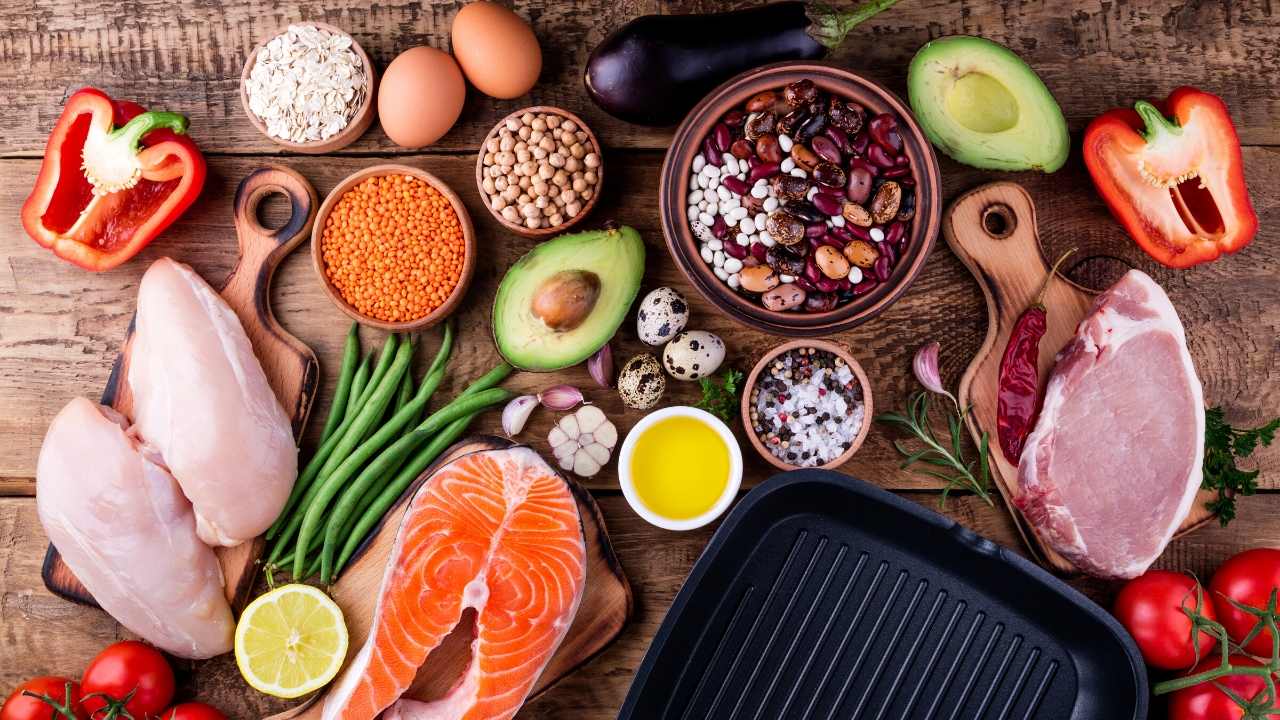 |
[TAG43]Alisa Inouye from Savory Spice talks how to detect freshness in spices and how they can easily improve any kind of food. |
 |
[TAG44]August 10, 2023 After black pepper, it is now the turn of cardamom to witness a price surge reportedly on speculative buying. The rates soared to ₹2,250 per |
 |
[TAG45]Order the Top 10 HERBS & SPICES here: Garlic: https://amzn.to/47sYWM8 Thyme: https://amzn.to/3Yvnv6P Fennel: |
 |
[TAG46]definition of spices |
 |
[TAG47]It's time for another episode of the Morning Sprint! Today we'll be talking about pumpkin spice and everything nice -- no, really. Believe it or not, some |
 |
[TAG48]CARDAMOM E-AUCTION SPICES BOARD OFFICIAL |
 |
[TAG49]Donald Trump voters told us why billionaires have too much power. We visited a Trump rally in search of an honest conversation with Donald Trump's |
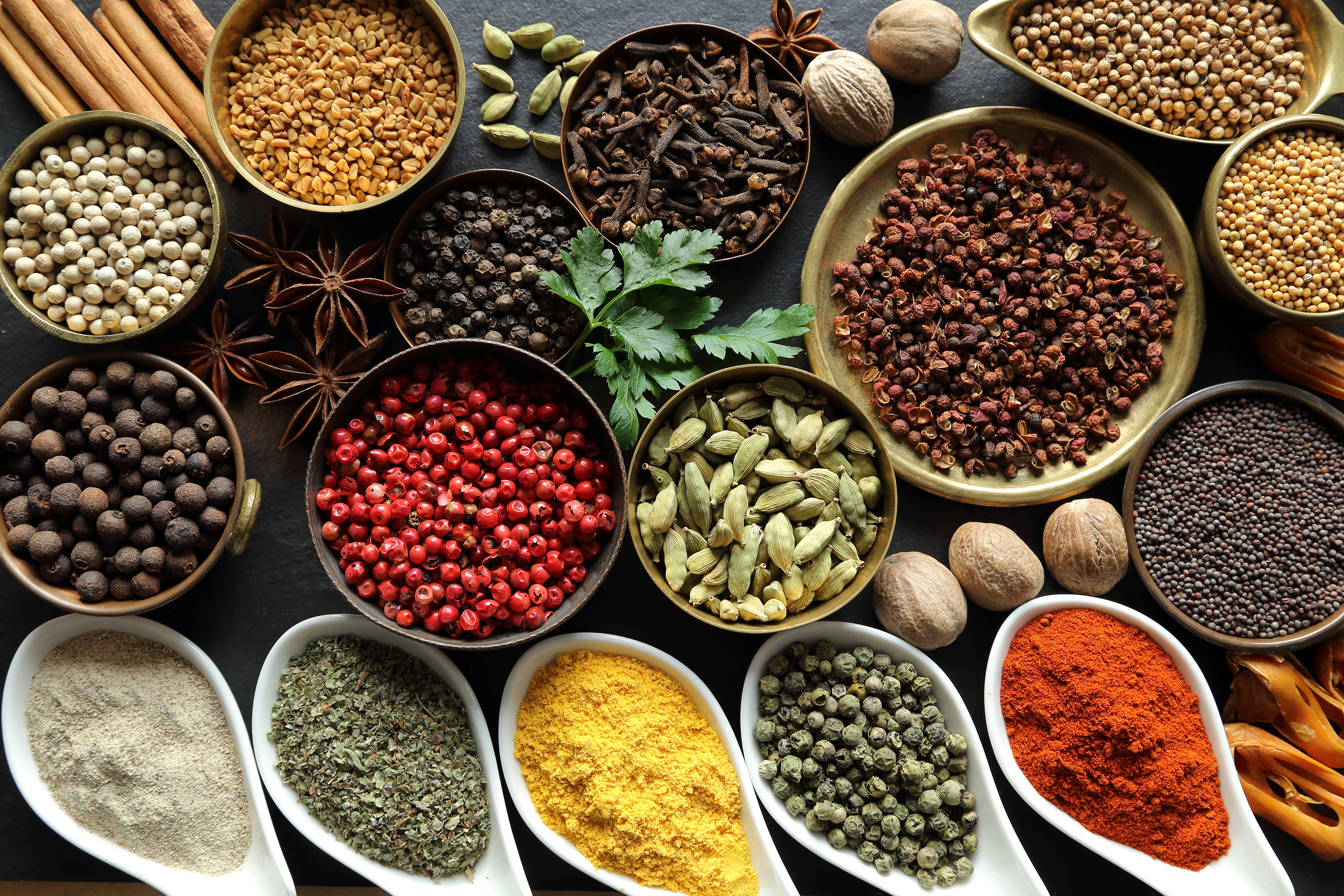 |
[TAG50]Important spices in cooking |
 |
[TAG51]We recreated Pokemon Gym Challenges and puzzles in real life, but turned into competitions! The new John Michael and Co Patreon: https://www.patreon |
 |
[TAG52]Switzerland is building a dam in front of a dam. Skip the waitlist and invest in blue-chip art for the very first time by signing up for Masterworks - |
 |
[TAG53]I've talked about Teyvat's ancient history a bunch of times but something still bothers me: Why did the moons fall, and WHEN? And if we can answer that |
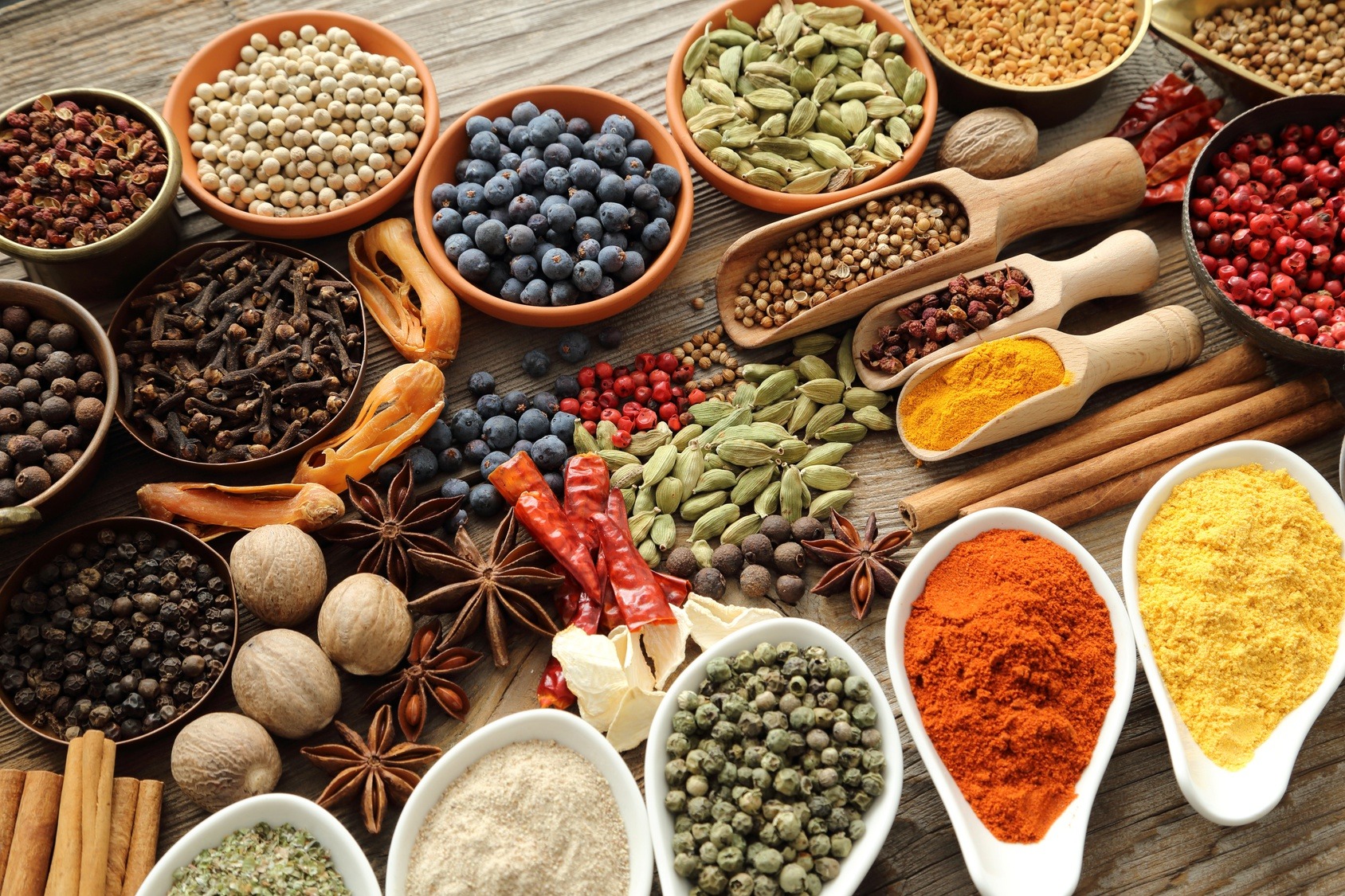 |
[TAG54]Herbs, spice & everything nice, these blog and articles explain the many uses of spices, including spices for weight loss, spices for brewing, and how to store |
 |
[TAG55]Nuland, 'frank and difficult' meeting in Niger The Duran: Episode 1664 *****LOCALS COMMUNITY***** https://theduran.locals.com 1 MONTH FREE TRIAL: |
 |
[TAG56]Spicy Pork Belly Curry, Stir Fried Pumpkin Leaves & Rice * MUKBANG SOUNDS * Thank you guys for watching my video. If you like this video, please |
 |
[TAG57]August 8, 2023The Hindu BusinessLineBlack pepper has turned hot in the recent weeks on speculative buying amidst concerns of delayed crop setting due to the |
/spices-5689d3013df78ccc1533efad.jpg) |
[TAG58]spices | Visit our blog for recipes, cooking tips and techniques as well as our staff's favorite eats and travel adventures. |
 |
[TAG59]2023-08-08Jeera yesterday settled down by -0.45% at 63115 on profit booking after prices gained as supply is limited due to the rainy environment. However, |
 |
[TAG60]The price of pepper from India increased by 20% in the past week. The main reason is the sudden increase in demand from the domestic market. Besides, the |
 |
[TAG61]Vietnam seen firmer today as market opened with raw material price at 72,5 VND/kg an uptrend by about 3,5% from opening week 30 level. Small demand was mostly |
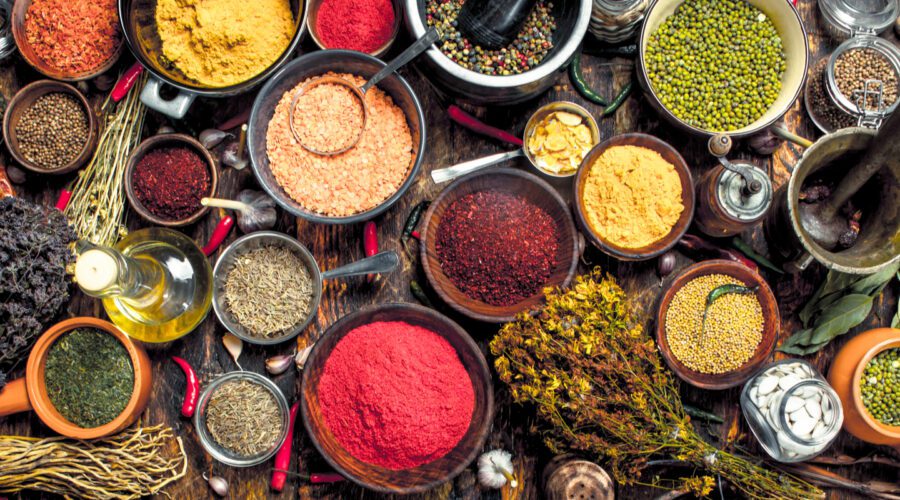 |
[TAG62]This spice blog writes about Indian fenugreek, Canadian coriander, Egyptian dill weed, Syrian Aleppo pepper, Granada nutmeg, & more from around the world. |
 |
[TAG63]Caviar, Champagne…cardamom? While it may not be the first thing that comes to mind when we think about culinary delicacies, the latter certainly carries its |
 |
[TAG64]Victims — some of whom had to close their shops because of the losses — say the heists were executed with such meticulous planning and finesse that they |
 |
[TAG65]Kochi: The price of pepper increased by Rs 30 per kilo within a day. In other words, the price per quintal went up by Rs 3000. This sudden and unexpected rise |
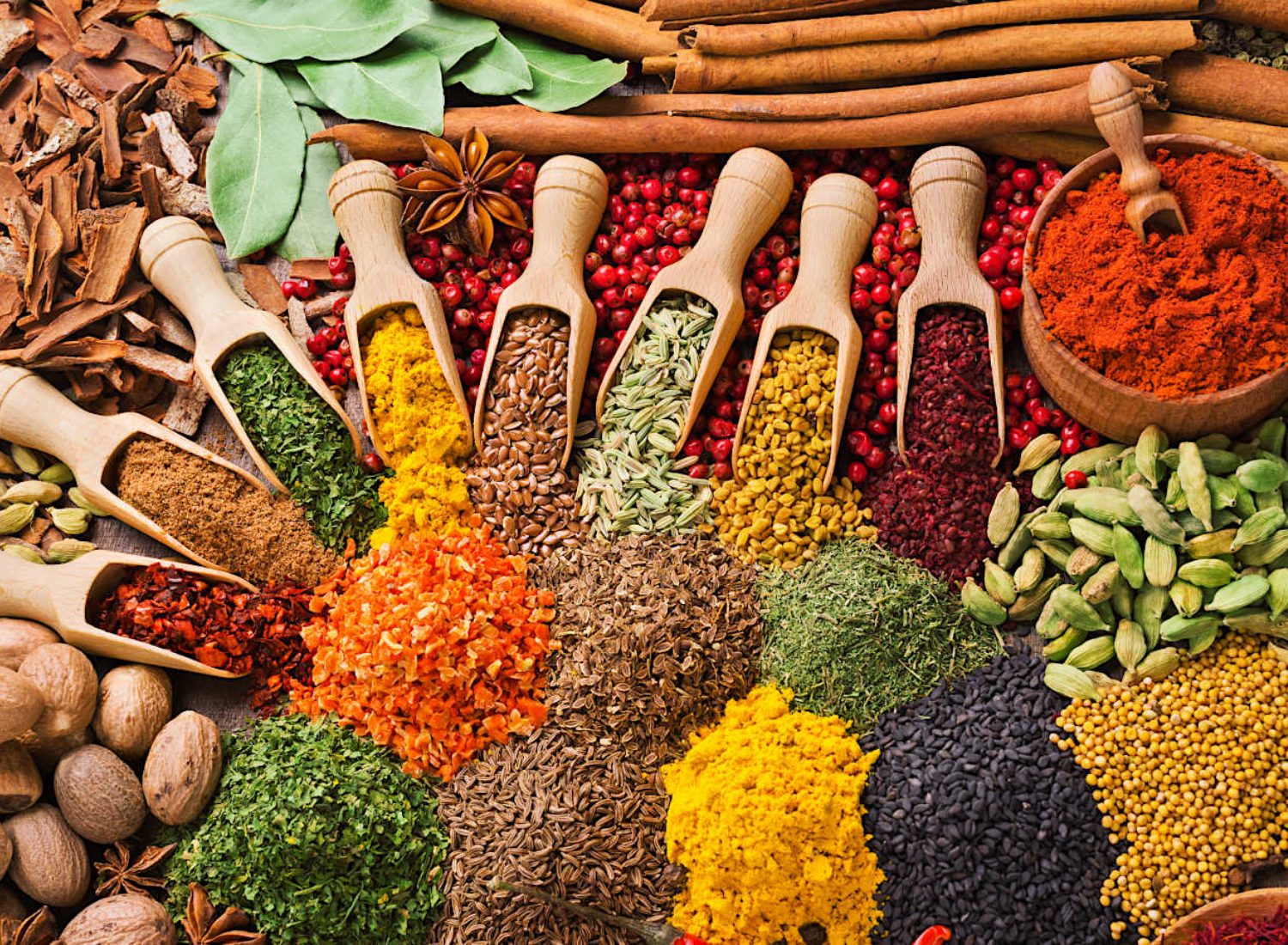 |
[TAG66]World of Spice is your online store for a massive range of High Quality Herbs Spices and Seasonings. Wholesale, Foodservice and Catering High Quality Herbs |
 |
[TAG67]KUCHING, Monday, 24 Jul 2023The price recovery in domestic pepper built up in the January to June 2023 period is expected to gather pace in the second half of |
 |
[TAG68]Van Socheata 20 July 2023 In the first half of 2023, Cambodian pepper exports, encompassing all varieties, hit about 4,300 tonnes. This reflects a drop of |
Did you miss our previous article...
https://belovedsaffron.com/spices/the-history-of-the-burger-in-america
.png)
